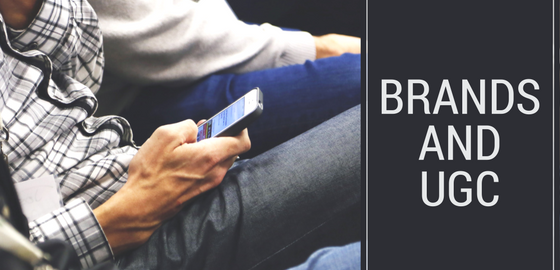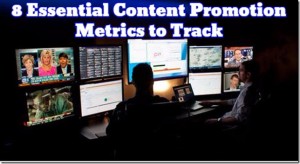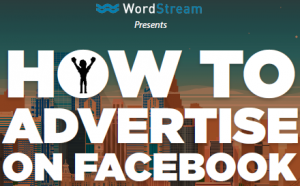— November 8, 2017
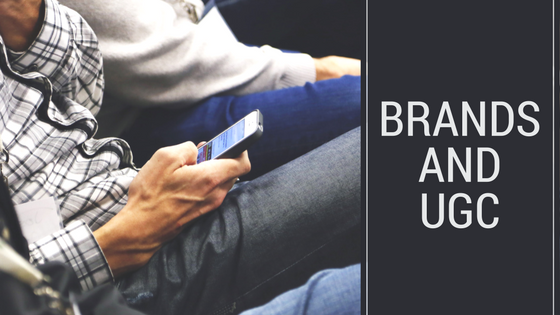
It’s not news that people search social media for reviews on purchases, hotels, restaurants and such, or that they ask their friends for recommendations. According to the Nielsen Trust in Advertising report, 83% of consumers world-wide trust recommendations from friends and family. 66% said they trust consumer opinions posted online.
So, it makes sense that when consumers are planning a milestone, like getting married, having a baby, big financial investments like cars and homes, even taking a vacation, they look to social media for recommendations.
I just read the Sprout Social Q4 Index for 2017, and it’s got some very interesting data, especially if you’re a marketer.
The report is based on data from 357,000 public social profiles (171,000 Facebook; 134,000 Twitter; 52,000 Instagram) of continually active accounts. They analyzed more than 5.7 billion messages sent and received between Q3 2016 and Q3 2017.
There’s lot of good information here, as you’re planning your winter marketing campaigns. Download and read the full report here to drill in deep. Here are some things that I got from the report.
Why do people include a brand name in their social posts?
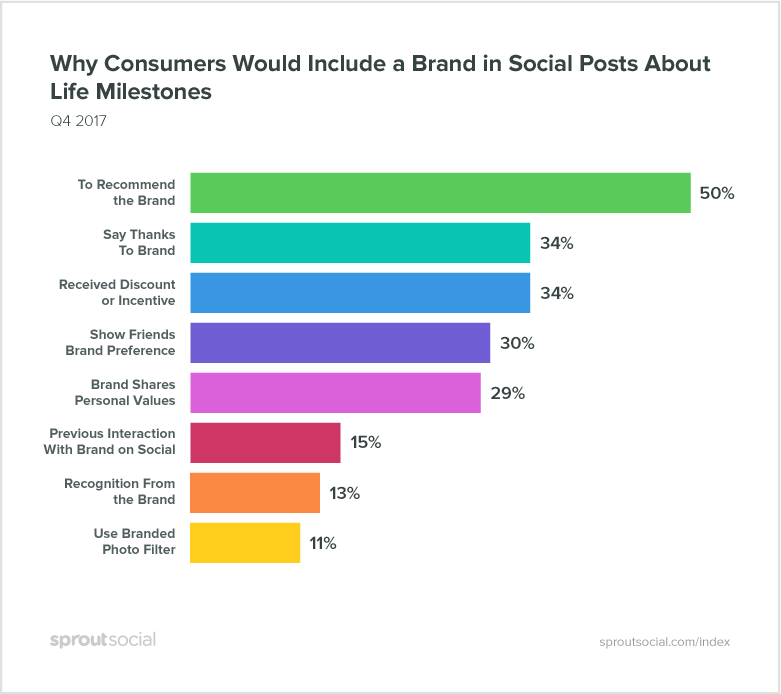
When you got the new Google Pixel or the iPhone X for your birthday. Did you share it on your favorite social networks to show off? Yeah, you probably did. Did you go there when you had an issue with screen freeze, or when you needed an app for something? I bet you did. Did you mention the brand? Yep. You did, and that, my friend, is User Generated Content.
User Generated Content (UGC)
According to the Sprout Social study, 41% of Millennials want to have their content shared by the brand, while only 23% of GenX and Baby Boomers do. Why the difference? It could simply be that millennials are digital natives and boomers are not. I’d love to hear your theories on this. As a boomer who tends to act more like a millennial in such things, I don’t get it.
According to this infographic from AdWeek, Millennials prefer UGC with people in the image, where Boomers focus on product details. Interesting. Why do you think that is?
Let’s face it, it’s fun to see your photo or review used by a brand you love. It makes us feel valued and respected. Then we share that brand post with our friends, they share it with their networks, and so on. It’s all candy for the brand, as long as it’s positive.
UGC is being used by brands more and more often.
Why? It’s inexpensive (generally free) and generates trust because it’s created by users and their friends respect their point of view. This AdWeek post tells us people are 76% more likely to find content posted by other consumers to be more honest than that posted by brands.
Some brands use UGC it well, while others? Not so much.
The best UGC is natural, doesn’t look like the brand paid for it or provided content, it’s in the user’s own voice, sharing their own experience. Some brands try to encourage users to share, and that’s great, but sometimes the brand gets more than they asked for.
Take McDonalds #McDStories campaign, for example. The brand asked for users to share their favorite McDonalds experiences.
This is how #McDonalds get their “Happy Meals” ready for you to eat.
On the floor.#McDStories #JunkFood @McDonalds pic.twitter.com/5zvRdEWCM2— Gareth Bird (@garethbirddj) April 30, 2016
It didn’t go well. As often happens with social media, it took on a life of it’s own and became a meme trashing the brand. Maybe because it was clearly created to make the brand look good, social media twisted it to be more fun for them.
The UPS Store UGC Campaign
Now, when you truly put the customer first, things can go quite differently. The UPS Store created the tag #TheUPSStoreCustomer to highlight some of the unusual things people shipped through their storefronts.
They showcased their small business customer’s content, sharing the love and reaping the rewards.
That’s a win/win all around. Why? Cuz it’s not about how cool the brand is, it’s about the user and it lifts them up and when we see these posts we think nice things about the UPS Store.
UGC and the law.
Because UGC is so powerful, brands want to use it more, particularly in ads, on their websites and even in print. This is where it gets sticky. Searching for content on Twitter through Twitter’s API and taking an image posted by a user there for example. Twitter grants a license to “copy a reasonable amount of and display” Tweets on a website, like this blog for example, as long as it complies with certain rules. Read more about that here. https://developer.twitter.com/en/developer-terms/agreement-and-policy
U.S. law—in the form of Section 512(c) of the Digital Millennium Copyright Act(DMCA) appears to create a safe harbor from copyright damages and allow brands to use UGC on social media as long as they comply with the safe harbor requirements. (read the link above for the legalese).
It’s clear that one thing is true. Nobody is clear on this yet. Can you use user-generated content whenever you want wherever you want? I say no. Get permission to use content or state clearly that you will be using content share (for a content for example) and how and where it will be used.
I’m not a lawyer and I don’t play one on TV, so investigate the legal issues here on your own and make smart decisions about how and when you use UGC. Above all, respect your fans’ privacy and treat them accordingly. Or else.
Bottom line?
It’s obvious that this is what people are looking for, so find ways to encourage people to organically create content and share it the way The UPS Store and others have done.
Set your intentions on lifting up your customers and show gratitude for their appreciation for your brand and your products and that will be returned to you.
Digital & Social Articles on Business 2 Community
(55)
